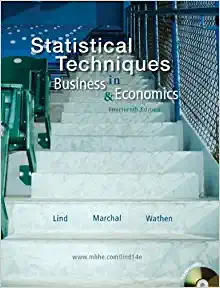
Part a 1. What is oligopoly? What is duopoly? 2. What is game theory? What is its role in explaining the behavior of an oligopolist or a duopolist? How do we determine the equilibrium strategies in a duopoly? 3. Cournot model: Quantity competition in simultaneous move homogeneous product duopolyexplain in words. The market for bricks consists of two rms that produce identical products. Competition in the market is such that each of the rms simultaneously and independently produces a quantity of output, and these quantities are then sold in the market at a price that is determined by the total amount produced by the two rms. Firm 2 has a patented technology that provides it with a cost advantage over rm 1. A recent study found that the market demand curve faced by the two rms is P = 2.1 m (a: + y), and costs are Cr} = 0.252: and 02(3) = 0.23;, where rm 1 produces 2: units and rm 2 produces 3; units of bricks. (3.) Determine the reaction function for each rm. (b) How much output will each rm produce in equilibrium? At what price? How much will be the equilibrium prot for each rm? 4. Stackelberg model: Quantity competition in sequential move homogeneous product duopolyexplain in words. Refer to the information given before part a of Question 3. Suppose rm 2 is a "naive" Cournot duopolist so that rm 1 can act as a Stackelberg leader. (a) What level of output will each one of them produce in equilibrium? At what price? How much will be the equilibrium prot for each rm? (b) Ignoring antitrust considerations, would it be protable for rm 1 to merge with rm 2? Explain. Part b 5. Bertrand model: Price competition in simultaneous move homogeneous product duopolyexplain in words. Consider the brick producers again. This time, each rm simultaneously and independently picks the price. Since the product is homogeneous, the consumer buys from the producer offering at a cheaper price. The market demand curve faced by the two rms is P = 2.1 m (a: + y), and costs are 01(3) = 0.23: and 02(y} = 0.21;, where rm 1 produces I units and rm 2 produces y units of bricks. What price will each one of them charge in equilibrium? How much will be the prot? 6. Price competition in simultaneous move differentiated product duopoly: There are only two food trucks in a town. Their menus are not identical. but not totally different either. The price for each entree in a truck is the same. The trucks pick their prices and sell according to their demand. The demand curve faced by truck 1 is given by: .r = 113 25p: + 2033-; and by truck 2 is given by: y = 100 25102 + 20131. The costs are 01(3) = 3.1: and Cy) = 2.43;, where rm 1 serves .1: consumers and rm 2 serves y consumers. (a) Determine the reaction function for each truck. (b) How much output will each truck produce in equilibrium? At what price? How much will be the equilibrium prot for each truck








